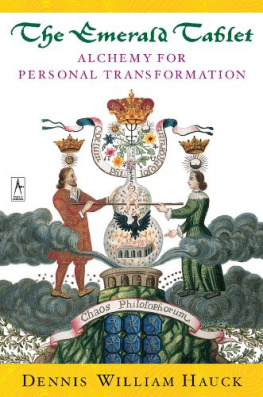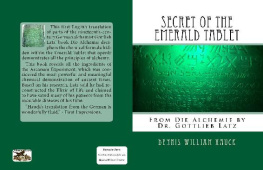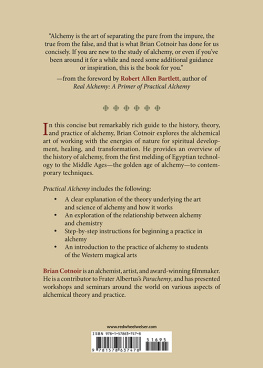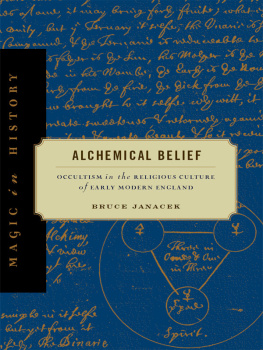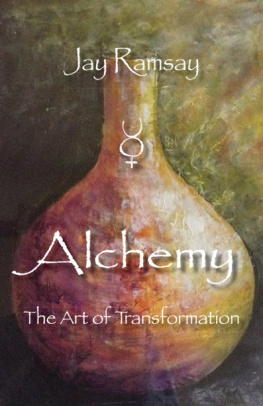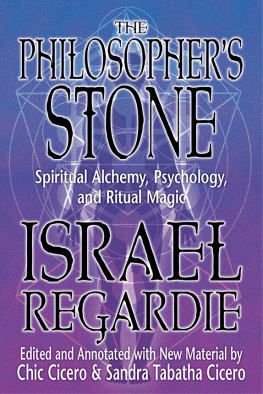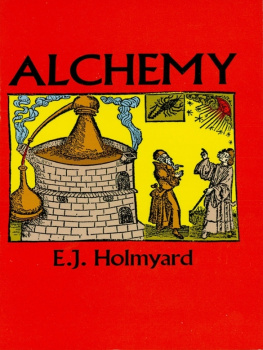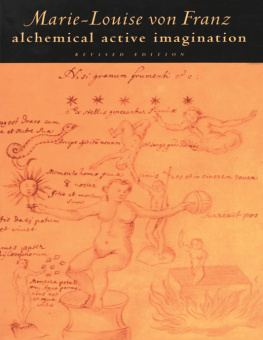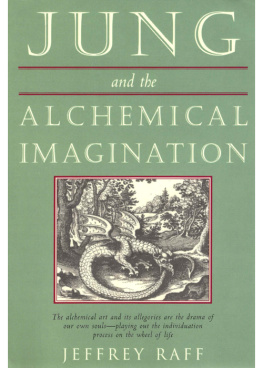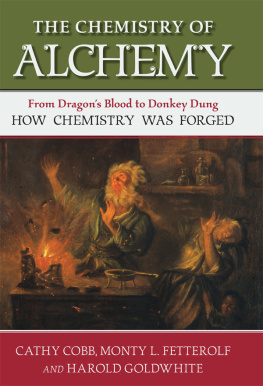Alchemy Reference Guide
A Tool for Exploring the Secret Art
by Dennis William Hauck
Includes Appenix of
Recommended
Books and Websites
ISBN 0-9637914-6-X
Dennis William Hauck
All Rights Reserved.
ALCHEMY DICTIONARY
- A -
Ablation is the Separation of a component of a substance by removing the upper part; skimming off the surface of a compound; separating a component by whisking the surface with a feather or cloth.
Ablution is the washing of a solid with a liquid, usually in plain water. Generally, it is purification by successive washings in a liquid. Spiritually and psychologically, it is facing one's emotions and letting feelings flow, so that innocence and purity can be restored. Baptism.
Abstraction is a process of sublimation or distillation.
Aes Cyprium is Cyprian brass or copper.
Aion (see Ouroboros)
Air is one of the Four Elements of alchemy. Air in the alchemical sense carries the archetypal properties of spirit into the manifested world. It is associated with the operation of Separation and represented by the metal Iron.
Albification is making the matter in the alchemical work become white. Refers to both physical and spiritual processes.
Alchemy The word is derived from the Arabian phrase "al-khemia," which refers to the preparation of the Stone or Elixir by the Egyptians. The Arabic root "khemia" comes from the Coptic "khem" that alluded to the fertile black soil of the Nile delta. Esoterically and hieroglyphically, the
word refers to the dark mystery of the primordial or First Matter (the Khem), the One Thing through which all creation manifests. Alchemy, then, is the Great Work of nature that perfects this chaotic matter, whether it is expressed as the metals, the cosmos, or the substance of our souls.
Alembic is the upper part of a still; a stillhead, a type of retort. The term is often used to refer to a complete still. (see cucurbit; Distillation)
Alkahest is the power from Above that makes possible alchemical transformation. The word is usually translated as "universal solvent," which alludes to the ability of the alkahest to dissolve or reduce all physical matter to its basic essence. With metals, this meant transmuting them to their purest form, which was gold. In the human body, this meant the creation or revealing of a golden body of consciousness, the Astral Body.
Aludel is a pear-shaped earthenware bottle, open at both ends. It was used as a condenser in the sublimation process and thus came to signify the end-stages of transformation. Also called the Hermetic Vase, the Philosopher's Egg, and the Vase of the Philosophy.
Amalgamation is the formation of an amalgam, or alloy, of a metal with mercury. This term is sometimes extended to mean any union of metals. Amalgam.
Angel An angel in alchemical treatises symbolizes sublimation or the ascension of the volatile principle.
Animals are often used to symbolize the basic components and processes of alchemy. They may be used to symbolize the four Elements such as the lion or ox (Earth), fish or whales (Water), eagles (Air), or salamanders or dragons (Fire). Aerial animals generally indicate volatile principles, while terrestrial animals indicate fixed principles. Whenever two animals are found, they signify Sulfur and Mercury or some relationship between the fixed and the volatile.
Ankh is a hieroglyphic character used by Egyptian alchemists to denote the ascendancy of the life force or spirit (the circle) over the material world (the cross). In other words, through crucifixion, the soul rises and is reborn on a higher level. Its use dates back over 3,000 years and is a symbolic rendition of the principles expressed in the Emerald Tablet. In its design, the circular One Mind projects downward into the One Thing, while the lateral manifested world on which we are crucified is indicated by the horizontal bar.
Antimony is from the Latin word antimonium used by Constantinius Africanus (1050 AD) to refer to stibnite ore. The metal antimony symbolizes the animal nature or wild spirit of man and nature, and it was often symbolized by the wolf. Alchemist Basil Valentine named the metal, after feeding it to some monks in a Benedictine monastery. The monks got violently ill and some even died, hence the Latin name that means "anti-monk." Spiritually too, monks feel most threatened by their own animal nature. Oddly enough, the Tincture of Antimony cures venereal diseases. Associated with the attributes of Lead.
Apollo References to the Greek god Apollo signify the Sun as spirit or solar consciousness.
Aqua fortis is Latin for "strong water" and refers to nitric acid. Various grades of aqua fortis were prepared depending on the length of its Distillation, which concentrated the acid. A mixture of aqua fortis and spiritus salis ("spirit of salt," i.e., hydrochloric acid) produces aqua regia ("royal water" -- so named because it can dissolve gold). It was first prepared by distilling common salt with aqua fortis .
Aqua tofani is the oxide of arsenic. It was extremely poisonous but used by Paracelsus medicinally.
Aqua vitae is "living water" or water "with spirit." An aqueous alcohol concentrated by one or more Distillations.
Arcana ("magical secrets") are archetypal influences that transcend space and time. According to the ancient text Archidoxies , the arcana are pre-existing powers that "have the power of transmuting, altering, and restoring us." In this view, the arcana are the secret workings of the mind of God, the logos of the Greeks or what the alchemists referred to as the thoughts of the One Mind. In the Tarot, the arcana are represented by symbolic drawings that the reader tries to work with through meditation. In the Cabala, the arcana are represented by the esoteric properties of the letters of the Hebrew alphabet, energies that the cabalist tries to work with in the Tree of Life. In the in the ancient Chinese system of divination, the I Ching , the arcana are represented by the sixty-four trigrams, each with its own properties and influences. The alchemists believed the arcana were expressed on all levels of reality -- from chemical compounds to our innermost moods and desires.
Arcanum Experiment The early alchemists divided their chemicals into major and minor arcana. The major arcana consisted of the four compounds: Vitriol, Natron, Liquor Hepatis, and Pulvis Solaris. Three out of the four consisted of dual ingredients that were easily separable. Vitriol could be broken down into sulfuric acid and iron. Natron appeared as sodium carbonate and sodium nitrate. Pulvis Solaris was made up of the red and black varieties. Thus, the seven chemicals comprising the minor arcana were: Sulfuric Acid, Iron, Sodium Carbonate, Sodium Nitrate, Liquor Hepatis, Red Pulvis Solaris, and Black Pulvis Solaris. The alchemists believed that these secret chemicals could be combined in the Arcanum Experiment, the single laboratory experiment that would demonstrate the archetypal forces and evolution of the universe. Ideally, such an experiment should succeed on many levels, not only corroborating the deepest philosophical and psychological principles, but also providing concrete evidence of their veracity. The Arcanum Experiment exposed the hidden principles connecting heaven and earth, offering a framework in which to explain both microcosmic and macrocosmic events.
Archaeus is the Thing Itself of a substance. According to Paracelsus, it is the secret inner matter of a substance, its oldest part that goes back to when it was just an ideal image, thought, or vibration of spirit in the Above.
Archetype is an elementary idea rooted in the mind. It is the ideal or essence from which an existing thing has been copied and is part of creation itself. Archetypes are primordial patterns that show up on all levels of reality.
Next page

